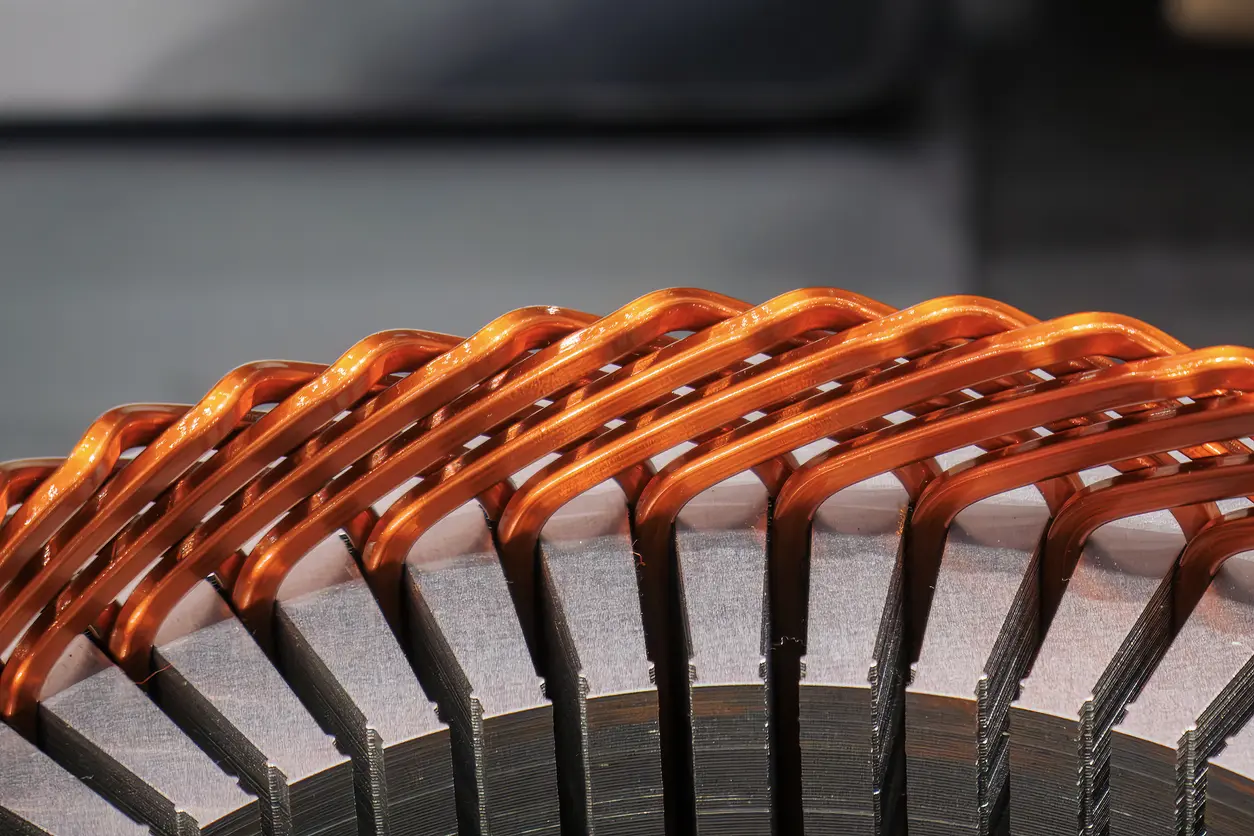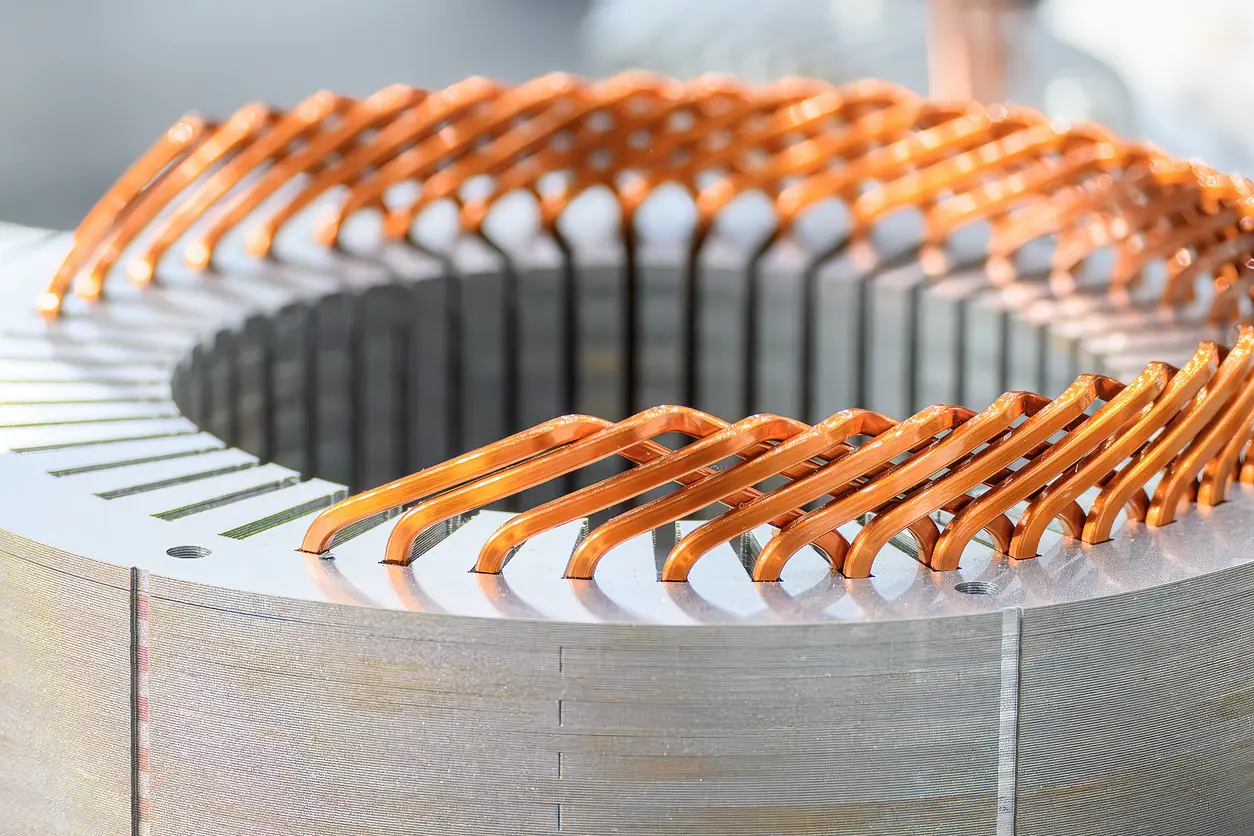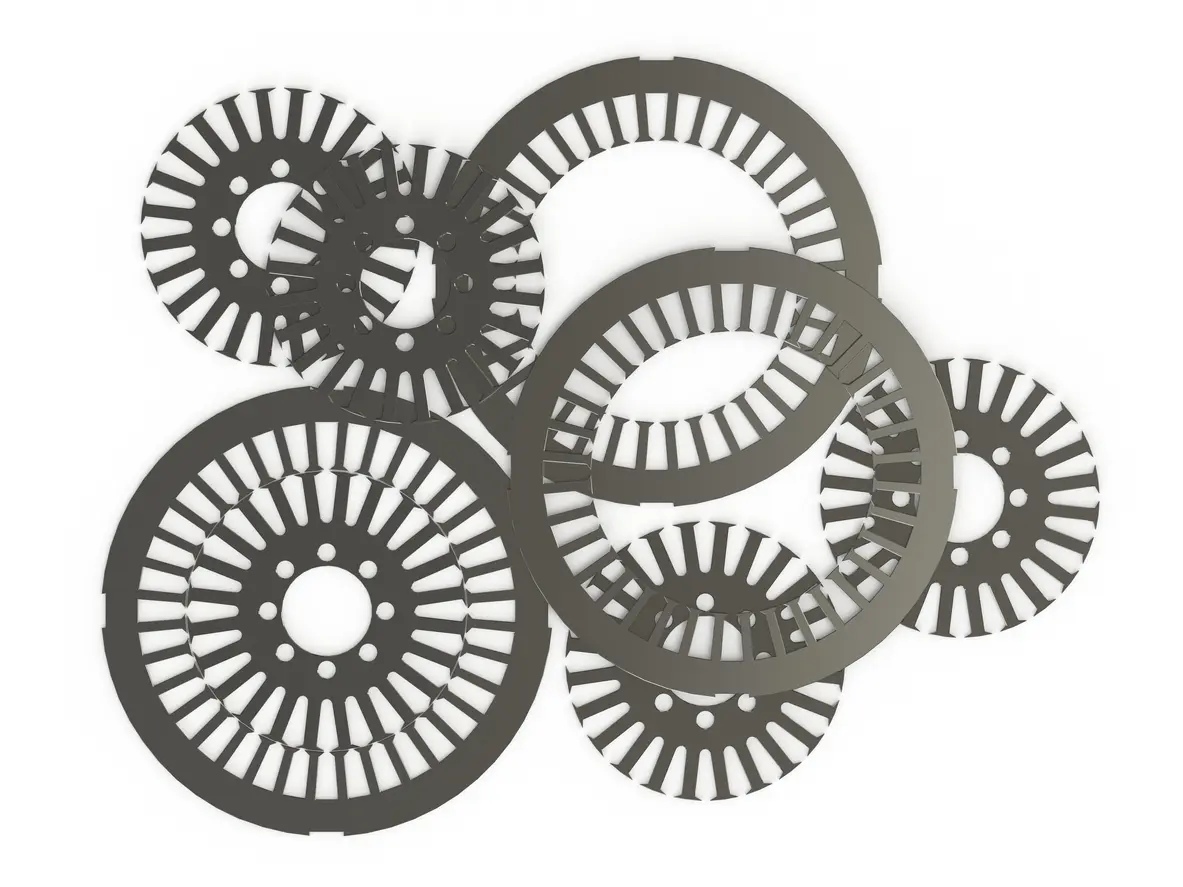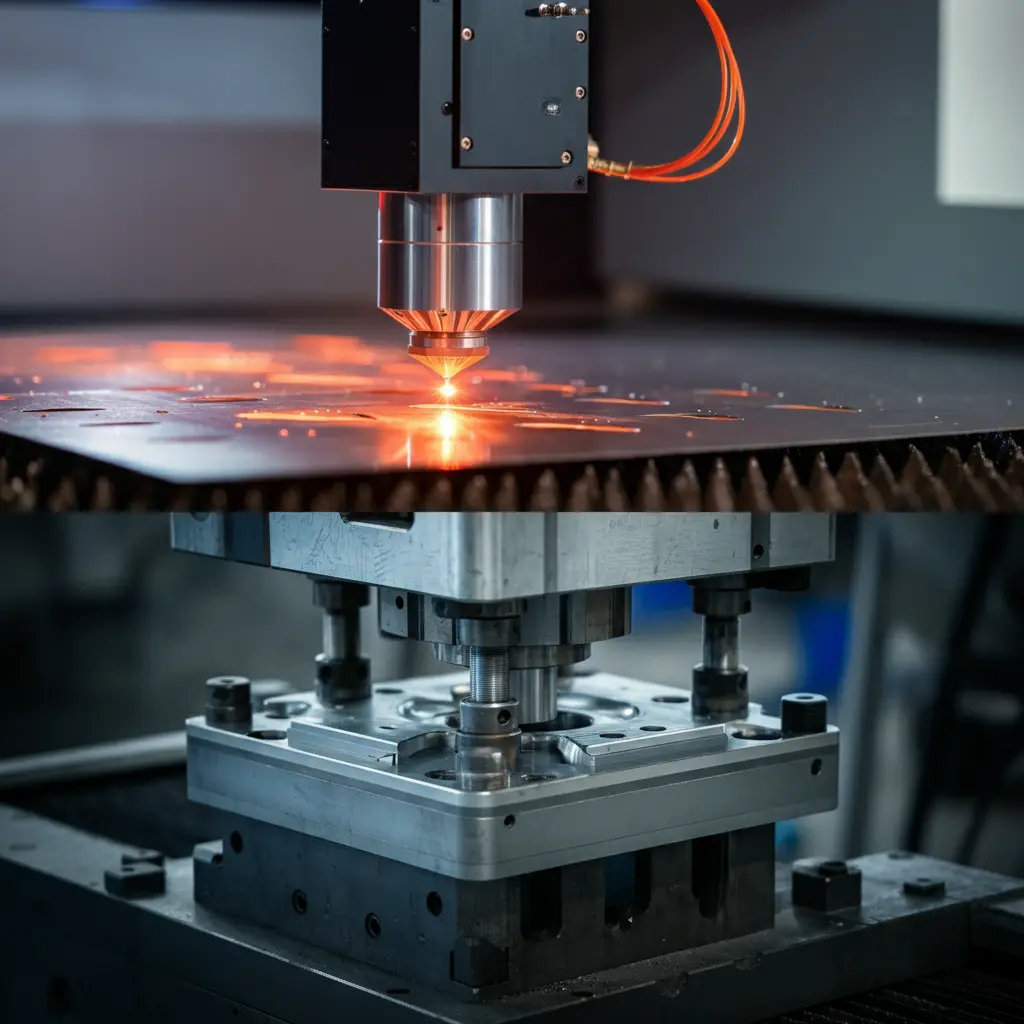1. Introduction to Electrical Steel
Electrical Steel has risen to prominence in various energy-saving applications, especially in motors and transformers. Its unique metallic composition—often containing precisely controlled levels of silicon—can effectively reduce energy loss and boost the overall performance of electrical equipment. While its advantages are noteworthy, gaining a deeper understanding of its fundamental characteristics and applying it properly will help prevent oversights in design and implementation.
1.1 Composition and Characteristics of Electrical Steel
The Magnetic Behavior of Electrical Steel
The magnetic behavior of Electrical Steel primarily depends on the grain structure and silicon content, both of which significantly impact magnetic performance. By adjusting these variables, manufacturers can reduce core losses and enhance the operating efficiency of motors, generators, and transformers.
Specialized Insulation Coatings
Moreover, the specialized insulation coatings commonly found on Electrical Steel effectively mitigate eddy current losses and reduce heat generation, offering greater reliability and stability under high-load power applications.
1.2 The Role of Electrical Steel in Energy-Saving Systems
Enhancing System Efficiency
With the world increasingly focused on resource conservation and environmental impact, energy-saving technologies have become more crucial. In high-load operations, Electrical Steel can significantly improve system efficiency, particularly in electric vehicles and wind power applications, as it helps maintain high output power while enhancing torque density and heat management.
Benefits to Sustainability Goals
These advantages also benefit system stability and cost-effectiveness, further aligning with sustainability goals in the energy and transportation sectors.
1.3 Key Precautions When Using Electrical Steel
Selection and Manufacturing Considerations
Although Electrical Steel offers numerous benefits, it must be selected and manufactured with caution. Factors such as thickness, silicon content, coating type, and overall quality all need to match the required specifications to ensure that actual performance is neither overestimated nor underestimated.
Minimizing Risks Through Careful Design
Through careful material selection and design, industries can fully harness the performance of Electrical Steel while minimizing risks arising from improper use. With prudent evaluation and control, the industry can make the most of this material’s potential while achieving energy savings and system stability.
2. Fundamental Definitions and Types of Electrical Steel
2.1 Composition and Principles of Electrical Steel
Silicon Content and Magnetic Properties
Electrical Steel is highly regarded in energy-saving and high-efficiency applications, mainly because it contains a suitable amount of silicon to alter the steel’s magnetic and electrical properties. Silicon can reduce eddy current and hysteresis losses in high-frequency or high-load equipment such as motors, generators, or transformers, effectively boosting overall efficiency and reducing heat generation.
Insulation Coatings
Additionally, an insulation coating is typically applied to the surface of the material to further reduce the flow of current between the laminated sheets, minimizing losses and noise. However, if the silicon content, thickness, or choice of coating is inappropriate, actual performance may be affected. Therefore, understanding the composition and principles behind this material contributes to more prudent decision-making in real-world applications.
2.2 Common Classifications and Differences
Grain Oriented (GO) vs. Non-Grain Oriented (NGO) Steel
Electrical Steel is generally divided into two main categories: Grain Oriented (GO) and Non-Grain Oriented (NGO). The grain structure of GO steel undergoes special processing, enabling superior magnetic performance in a specific direction; it is commonly used for transformer cores to notably reduce no-load losses. In comparison, NGO steel offers more balanced magnetic properties in all directions, making it widely used in motors and generators that require rotational operation for both performance and durability.
Variations in Thickness and Coating
Apart from orientation differences, Electrical Steel may also vary in thickness and coating design according to actual requirements. Thinner material helps reduce losses but can be more challenging to process; the type of coating affects heat resistance and insulation. To ensure it meets the overall system needs, businesses often evaluate the material’s properties, operating environment, and cost-effectiveness concurrently, aiming to select the most suitable electrical steel type and effectively balance performance and risk.
3. Surprising Highlight 1: Superior Magnetic Performance and Energy Efficiency
3.1 Hysteresis Loss and Eddy Current Loss
a. Energy-Saving Benefits of Low Losses
In equipment such as motors, generators, or transformers, hysteresis loss and eddy current loss are often the primary factors affecting energy efficiency. Because Electrical Steel is doped with a precise amount of silicon, it can significantly reduce these two types of losses. When the magnetization direction constantly reverses, hysteresis loss consumes energy; eddy currents circulate within the metal, converting into unnecessary heat. Using high-quality Electrical Steel effectively curbs such energy waste, leading to greater energy savings. However, attention must be paid to manufacturing quality and design configuration to avoid overestimating its performance while neglecting other considerations.
b. Improving Core Loss Reduces Equipment Wear
By appropriately selecting Electrical Steel, decreasing core loss not only saves operational costs but also helps to lower operating temperatures and vibration levels in equipment. Over prolonged operation, motors and transformers run at lower temperatures, which slows the aging of components and can extend the overall system’s lifespan. Nevertheless, choosing the right material specifications and production techniques is essential, as mismatched thickness or coating can increase losses or risk of failure.
3.2 Importance of High Permeability
a. Boosting Motor Output Power and Efficiency
Electrical Steel has relatively high magnetic permeability, allowing electromagnetic energy to be transmitted more effectively within the core. This means that under the same power input, motors or generators can produce higher output. Meanwhile, enhanced magnetic performance helps maintain stable device operation, ensuring a balanced approach to efficiency and overall performance.
b. Lower Operating Temperatures and Reduced Power Consumption
High permeability shortens the magnetic circuit and reduces energy losses, which in turn decreases heat build-up during operation. This eases the burden on cooling systems and helps reduce long-term maintenance costs. With the appropriate Electrical Steel and suitable structural design, systems can maintain stable performance while achieving tangible results in energy savings and heat dissipation.
4. Surprising Highlight Two: Meeting High-Speed and High-Efficiency Motor Demands
4.1 Suitable for Various Motor Structures
a. Compact Size and Maximized Performance
As the electric motor sector pursues higher speeds and greater power density, Electrical Steel plays an indispensable role. Its low magnetic losses help reduce heat generation even at the same volume, thereby enhancing motor stability and efficiency. Especially in applications requiring compact designs—such as electric vehicles or drone propulsion systems—an appropriate choice of Electrical Steel can achieve high efficiency within limited space. However, careful evaluation of material thickness and lamination design is required to avoid unnecessary vibrations or wear at high speeds.
b. Stability and Precision in High-Speed Applications
When a motor runs at high speed, even minimal magnetic losses or heat buildup can lead to reduced overall efficiency or a shortened service life. The permeability and insulation coating of Electrical Steel effectively lower such losses, ensuring stable high-speed operation. Additionally, the gap design between the rotor and stator must align with an appropriate material choice to prevent excessive mechanical stress when speed is increased. While high-speed operation has its benefits, it must be carefully managed based on actual usage scenarios, ensuring operating conditions and other components are well-coordinated.

4.2 Boosting Efficiency in Electric Vehicles and Wind Power
a. High-Performance Drive Motors in the Electric Vehicle Sector
The electric vehicle industry is highly competitive, with companies racing to develop more efficient motors to improve range and reduce heat generation. Electrical Steel is critical here, where its excellent magnetic permeability and low-loss characteristics enable motors to maintain stability at high speeds and high torque outputs. From city driving to highway travel, vehicles can effectively conserve energy and lower cooling demands, thereby enhancing the overall driving experience.
b. Stability and High Output in Wind Turbines
Wind turbines rely on high speed and durability to maintain consistent power output under varying wind conditions. By selecting the right Electrical Steel, electromagnetic losses between the rotor and stator can be reduced, maximizing energy conversion efficiency. Although the prospects for such technology are promising, it must align with each country’s environmental factors, wind conditions, and equipment installation requirements to avoid overestimating material benefits while overlooking the importance of system integration. Through careful assessments and attention to detail, Electrical Steel continues to play a key role in the global advancement of green energy.
5. Surprising Highlight Three: Reducing Noise and Vibration
5.1 Importance of Low Noise
a. Advantages for Household Appliances and Consumer Electronics
Excessive noise in household appliances and consumer electronics is often troublesome for users. Selecting appropriate Electrical Steel can help reduce the electromagnetic noise produced by motor operations, thereby improving the overall user experience. For instance, if a washing machine or air conditioner can maintain lower noise levels under the same power output, it will stand out in a highly competitive market. However, it is important to emphasize that while Electrical Steel can reduce some sources of noise, it must work in conjunction with other noise-reduction measures—such as improved bearings and structural reinforcement—to achieve the best results.
b. Minimizing Noise Impact on Work Environments and Users
Industrial settings also place a premium on noise reduction. When motors run for extended periods, continuous noise not only disrupts work efficiency but may also affect the physical and psychological well-being of operators. By choosing high-quality Electrical Steel and focusing on factors like sheet thickness, silicon content, and coatings during the design phase, electromagnetic characteristics can be further optimized to reduce unnecessary noise sources. Maintaining a realistic outlook is crucial to avoid depending solely on material properties and overlooking other structural or process-related aspects.
5.2 Vibration Control and Reliability
a. Relationship Between Electromagnetic and Mechanical Vibration
The vibration produced during motor operation can be categorized as electromagnetic or mechanical. Electromagnetic vibration typically arises from changes in magnetic flux, while mechanical vibration stems from part assembly or rotational imbalance. If Electrical Steel can sufficiently suppress eddy current and hysteresis losses, the amplitude of electromagnetic vibration may be relatively lower. Nevertheless, it is still essential to review the rotor, stator, bearings, and other mechanical design elements simultaneously to achieve the desired reduction in vibration.
b. Vibration Suppression Effects of High-Quality Electrical Steel
Using high-quality Electrical Steel implies stable consistency in material uniformity, coating quality, and manufacturing precision. These factors help mitigate issues related to uneven magnetic flux or surface roughness that can lead to vibration. Improved system stability not only decreases maintenance demands but also indirectly enhances production efficiency and safety. Each stage of design and production must be thoroughly evaluated to ensure that vibration control is not the result of a single factor but rather a synergy of multiple elements.
6. Surprising Highlight Four: Enhancing Sustainability Through Recycling and Reuse
6.1 Recycling and Reuse
a. Significance and Value of Electrical Steel Recycling
When products reach the end of their life cycle, a large amount of Electrical Steel may be headed for disposal. However, Electrical Steel’s relatively stable chemical and physical properties give it potential for recycling and reuse. Through appropriate disassembly and refining processes, metals can be recovered, and overall waste generation can be reduced, offering positive benefits for ecological sustainability and resource conservation.
b. Feasibility of a Circular Economy
Introducing the concepts of a circular economy at the design and manufacturing stages can make Electrical Steel easier to disassemble, sort, and recycle, thereby aiding the industry in achieving goals of resource regeneration and cost management. As market demand grows, companies that invest in related technologies and processes can reduce waste while maintaining quality. Although pursuing a circular economy remains challenging, it is ultimately advantageous for balancing environmental friendliness and economic returns. This approach also ensures a more stable supply of energy and materials in the future.
7. Surprising Highlight Five: Diverse Application Fields
7.1 Applications in the New Energy Industry
a. Solar Inverters and Fuel Cell Systems
In today’s increasingly mature green energy market, the design of solar inverters and fuel cell systems often requires both efficiency and stability. Effectively utilizing Electrical Steel’s low-loss and high-permeability characteristics can help reduce energy loss during power conversion. Since inverters and fuel cells generally operate under high-frequency or high-temperature conditions, selecting an appropriate coating and sheet thickness is crucial to avoid performance degradation caused by electromagnetic interference and heat. Although this technology shows market potential, actual implementation should remain objective and well-targeted based on varying national policies and industry conditions to avoid overlooking technical barriers and costs.
b. Energy Storage Systems and Smart Grid Equipment
As the power grid moves toward greater intelligence and decentralized configurations, energy storage devices have become a vital component. In manufacturing battery management systems or related power equipment, Electrical Steel can improve magnetic flux transmission efficiency while reducing heat buildup. To maintain long-term competitiveness, companies must balance material performance and cost-effectiveness. However, introducing any new technology or material requires ongoing testing and verification in real-world applications to ensure that potential benefits are not exaggerated at the expense of future maintenance or integration challenges.
7.2 Upgrading Traditional Industries
a. Energy-Efficient Upgrades for Elevators and HVAC Systems
In many traditional industries, elevators and central air conditioning (HVAC) systems consume significant amounts of energy over long periods. Appropriately introducing higher-performance Electrical Steel and combining it with efficient motor designs can effectively reduce energy loss during operation, allowing these systems to maintain more stable temperatures and operating efficiency. Nonetheless, before implementation, one must consider equipment structure and actual load requirements in conjunction with existing system specifications.
b. Lightweight and Efficient Applications in Aerospace and Defense
The aerospace and defense sectors value high power density and stability, making them especially cautious in selecting materials. Electrical Steel must not only meet strict quality standards but also maintain a balance in weight and size. By optimizing lamination thickness and coatings, along with precise production processes, it is possible to sustain reliability under high-speed operation and heavy loads. However, ultimate performance and lifespan rely on the interplay among various technical and design factors; no single material alone can fully determine final outcomes.
8. Surprising Highlight Six: Key Considerations in Choosing the Right Electrical Steel
8.1 Reference Specifications and Standards
a. Material Grades and International Standards (e.g., IEC, ASTM)
When assessing the suitability of Electrical Steel, it’s crucial to understand the different grades and their corresponding international standards. Specifications set by organizations like IEC and ASTM provide reference points that guide engineering teams in quickly identifying materials matching project requirements. While these standards lend credibility to material selection, it’s also advisable to reference real-world cases and test data from suppliers to avoid relying solely on standard guidelines that may overlook practical operating conditions.
b. Indicators Such as Thickness, Silicon Content, and Magnetic Permeability
The key to Electrical Steel performance lies in balancing silicon content, sheet thickness, and permeability. Insufficient silicon content may reduce the ability to control magnetic losses, but too much silicon could affect ductility and manufacturability. Similarly, thicker sheets might lower production costs but could increase eddy current losses; conversely, thinner sheets are harder to process and require more advanced technology and equipment. Hence, selecting materials should be guided by project needs, seeking a practical compromise between performance and cost.
8.2 Production and Quality Control
a. Importance of a Reliable Supplier
When selecting Electrical Steel, supplier stability and service quality are equally vital. A reliable supplier not only provides materials that meet specifications but can also assist during R&D and testing to ensure the final product meets the target operating environment. While choosing a well-known manufacturer or one with an excellent reputation often offers more assurance, material stability and consistency must still be verified through practical tests.
b. Quality Testing and Certifications (e.g., Loss Testing, Lamination Accuracy)
To ensure that Electrical Steel meets expected performance in real-world applications, it is recommended to conduct periodic loss testing, lamination accuracy inspections, and other international or regional certification procedures. The more stringent the quality control, the lower the long-term failure rate in equipment operations, and the more precisely overall system energy efficiency can be projected. Although these tests require extra cost and time, they are of great value in ensuring the reliability and service life of the final product.
9. Surprising Highlight Seven: Introducing Yucca Motorlamination’s Professional Solutions
9.1 Electrical Steel Laminations and Integrated Motor Core Services
Comprehensive Solutions
Yucca Motorlamination specializes in the motor core manufacturing field, committed to offering integrated solutions that combine both quality and efficiency. By leveraging precise lamination technology and custom designs, Electrical Steel’s high permeability and low loss advantages are effectively maximized. Given that many industries have diverse requirements, Yucca Motorlamination’s team can flexibly plan material selection, sheet thickness, and insulation coatings tailored to various sector characteristics.
One-Stop Service Model
This one-stop service model not only shortens the time clients spend searching for components and coordinating supply chains but also reduces communication costs, allowing businesses to proceed with product development or testing more quickly.
Rigorous Quality Control
At the same time, Yucca Motorlamination adopts rigorous quality control and production processes to ensure that the gaps and evenness between each Electrical Steel lamination meet ideal standards. This precision is especially critical for high-speed motors or heavy-load applications, where even minor deviations can lead to extra energy losses or mechanical vibrations. Adopting this professional solution helps companies achieve a balance between high performance and durability while lowering maintenance costs during actual operation.
9.2 Reducing Production Risks and Enhancing Competitiveness
Controlling R&D and Production Timelines
In today’s intensely competitive market, controlling R&D and mass production timelines can significantly influence a product’s success. Yucca Motorlamination brings extensive lamination and processing experience to the table, offering early-stage advice on material testing. By selecting suitable Electrical Steel and design configurations, clients can mitigate product risks.
Streamlined Production Process
Moreover, because the overall production process is streamlined, businesses can allocate more resources and manpower to other development aspects, further boosting market responsiveness. Collaborating with a reliable supplier also helps maintain product quality, avoiding the need for last-minute changes in materials or manufacturing facilities—changes that could lead to unnecessary trial production phases and maintenance expenses.
Proven Track Record
With Yucca Motorlamination’s expertise and proven track record, they can provide concrete references across various application fields and collaborate with clients to validate product performance. Ultimately, this thorough partnership approach allows businesses to steadily increase competitiveness while ensuring that the Electrical Steel they use delivers the intended benefits.
10. Conclusion: How Electrical Steel Is Shaping the Future of the Green Energy Industry
10.1 Reviewing the Surprising Highlights
Amid growing global awareness of energy efficiency and environmental protection, Electrical Steel is increasingly recognized as a key material supporting the growth of green energy. From reducing losses and supporting high-speed performance to decreasing noise and vibration, these surprising highlights reflect the material’s versatile advantages. Its more eco-friendly manufacturing process and recyclability, along with its support for high-efficiency motors, electric vehicles, and wind power, grant Electrical Steel a strong foothold in various industrial sectors.
Assessing Technical Limitations and Costs
However, while acknowledging its contributions, it remains crucial to carefully assess technical limitations and costs, and to adopt integrated solutions grounded in practicality.
10.2 Looking Forward
Future Improvements and Market Demands
Looking ahead, as research and manufacturing processes advance, Electrical Steel could further improve its magnetic properties and durability while also meeting increasing demands for lighter designs. These developments are particularly crucial for rapidly expanding markets such as electric vehicles and energy storage systems, where balancing performance, weight, and cost is vital.
Integration with Emerging Technologies
Moreover, with the popularization of IoT and smart grids, intelligent monitoring and management will create new opportunities for Electrical Steel in power systems. Still, any new technology must undergo rigorous testing and validation in both pilot and mass-production phases to fully assess its durability and safety risks, ensuring long-term reliability and sustainability rather than focusing on short-term results alone.
Strategic Planning for Sustainable Development
Overall, Electrical Steel stands out as a critical material for the green energy sector, offering significant growth potential and diverse applications. To ensure these advantages yield tangible benefits for industry and society, companies need to integrate upstream and downstream supply chains, refine their manufacturing processes, and stay updated on international standards and policy trends. With rational evaluation and comprehensive planning, Electrical Steel is poised to assume an even more pivotal role in a green economy, driving global energy transitions and sustainable development forward.
Further Reading:





